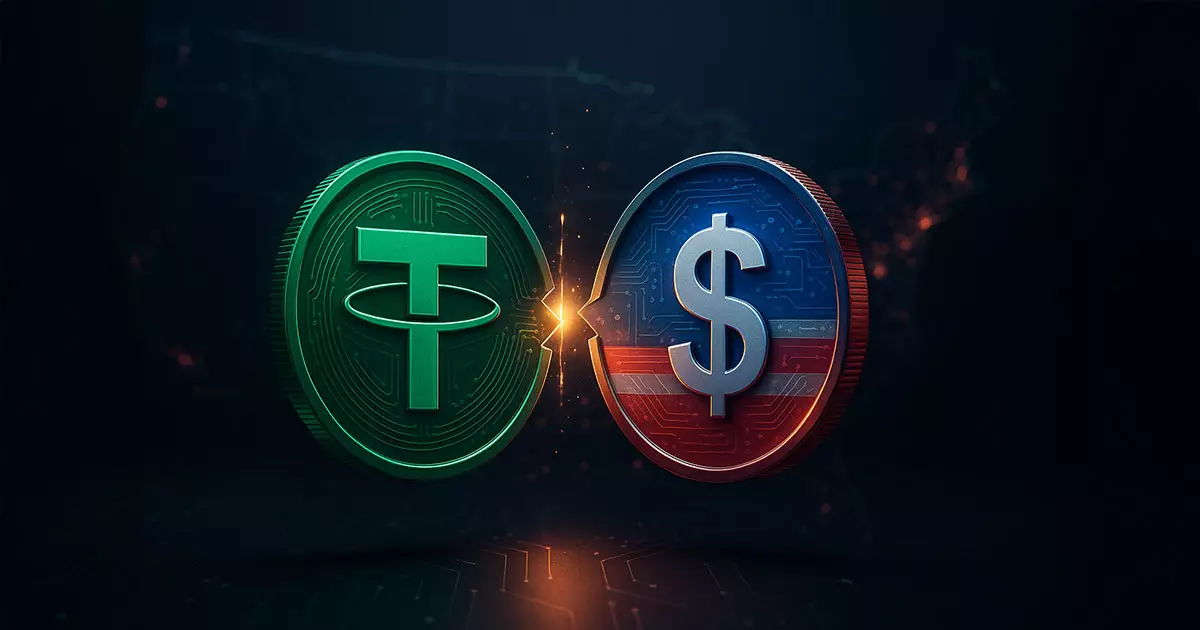Tether, under CEO Paolo Ardoino’s direction, is charting a bold course as it contemplates the creation of a domestic stablecoin specifically designed for the U.S. market. This comes at a time when the United States is looking to establish regulatory frameworks for stablecoins through the Guiding and Establishing National Innovation for US Stablecoins Act (GENIUS Act). With the tumultuous nature of global finance, the demand for a reliable monetary form is imperative. Tether seeks to merge the stability provided by U.S. dollars with the technological advancements that digital currencies offer.
For Tether, the U.S. market provides an opportunity not just to strengthen its offerings but also to redefine the financial landscape entirely. While Ardoino notes that Tether’s primary focus remains on the unbanked populations in emerging economies, the U.S. presents a different challenge, necessitating a stablecoin that addresses specific domestic issues—such as payments and efficient value retention.
Emphasizing the Unbanked and Underserved
Ardoino mentions that around 1.4 billion adults remain unbanked, predominantly in Sub-Saharan Africa and parts of Asia. This demographic is Tether’s primary target, utilizing USDT for remittances and safeguarding their savings against local currency depreciation. The intent behind Tether’s initiatives is commendable; bringing financial stability and accessibility to those most in need is a noble cause. However, it raises a crucial question: will Tether’s expansion into the U.S. detract from its mission to serve global markets?
Ardoino claims that stablecoins could serve a different function domestically, arguing they should enhance transaction efficiencies in a developed economy laden with multiple payment mechanisms. This dual focus brings to light an essential balance that needs to be addressed: will Tether’s venture into the U.S. create opportunities for underserved communities here, or will it prioritize a profit-driven agenda that might sideline its altruistic mission?
The GENIUS Act: A Beacon of Regulatory Clarity
The GENIUS Act is generating significant attention, and for good reason. Tether’s commitment to comply with this legislation could set a precedent in how crypto and traditional finance interact. Ardoino’s enthusiasm for the requirement that stablecoin issuers maintain 100% cash equivalency in reserves—preferably in U.S. Treasuries—demonstrates Tether’s strategy to solidify consumer trust.
Opting for cash equivalents over European banking deposits indicates Tether’s inclination to align itself with U.S. economic interests. This decision could serve both their business model and the broader market—making it advantageous for both consumers and Tether. Yet, one cannot ignore the potential for vested interests to influence these regulations, raising questions about the true efficacy of purported safeguards for users.
A New Wave for Competitive Stablecoins in the U.S.
In a landscape dominated by various payment methods, Tether’s prospective domestic stablecoin promises to introduce “a different feature set” distinct from USDT. Whether this means competitive interest rates, enhanced security protocols, or innovative user interfaces remains to be clarified. What is evident is that Tether knows the stakes are high; a successful launch hinges on understanding consumer preferences while adhering to possibly burdensome regulations.
Complying with the GENIUS Act is not merely about ticking boxes; it is a strategic move designed to position Tether favorably against both traditional and digital financial players in the U.S. It could set the standard for future iterations of stablecoins, outlining a roadmap that others may follow.
Looking Ahead: Challenges Loom
Despite Ardoino’s optimism about smoothly navigating the regulatory landscape, the shift toward a domestic stablecoin is fraught with challenges. Regulatory authorities will likely scrutinize Tether not just for compliance but for transparency and ethical practices. Trust is paramount in this emerging space, and any missteps could severely damage Tether’s reputation.
Moreover, the dynamic nature of the cryptocurrency market means that what works today might not work tomorrow. Tether must stay agile, anticipating changes in consumer behavior and regulatory expectations. This need for adaptability is at odds with the stability that cryptocurrencies promise, creating a dichotomy that Tether must navigate skillfully.
In an era where value and stability are paramount, Tether’s initiatives could transform how Americans engage with digital finance, but only if they can maintain their focus on creating long-term benefits for end-users, both domestic and global.

